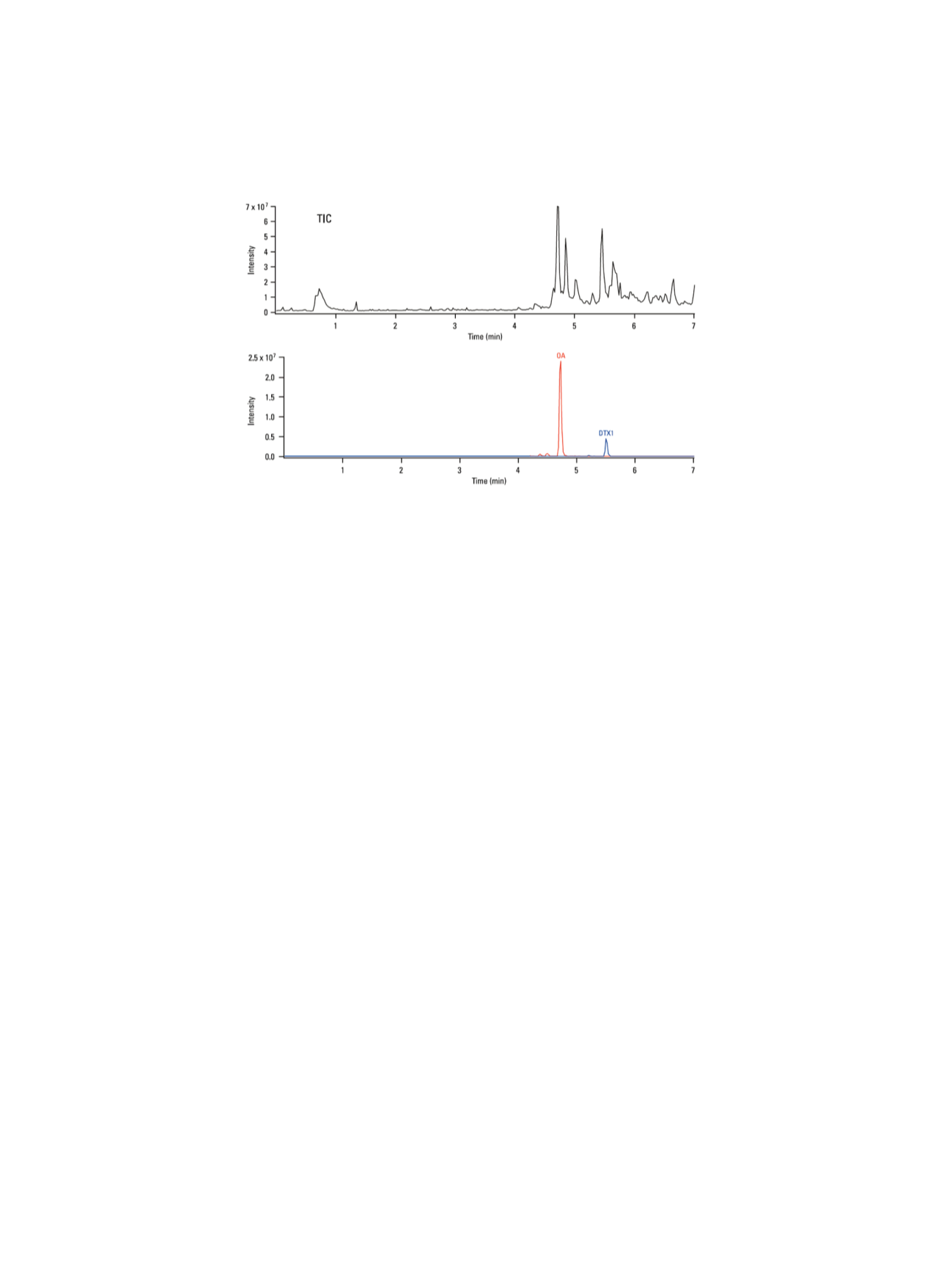

4
The Thermo Scientific Application Note 52154 describes the use of the Thermo Scientific
™
Exactive
™
Orbitrap mass spectrometer for screening lipophilic marine biotoxins commonly found
in shellfish. The method was optimized using a standard mixture of marine biotoxins applied to
mussel tissue extract. In summary, shellfish tissue was homogenized repeatedly with a mixture of
methanol and water, centrifuged and directly analyzed by an Exactive Orbitrap LC-MS.
7
The
LC-HRAM method was based on full scan data acquisition at 50,000 FWHM resolving power and
alternating polarity that allowed simultaneous detection of both positive and negative ions.
Figure 2. Exactive Orbitrap LC-MS analysis of a mussel tissue extract showing the total ion chromatogram (TIC; top trace) and 5 ppm
mass chromatograms for okadaic acid and DTX1 (lower trace).
A similar approach was recently published by Domenech
et al
8
in which the Exactive Orbitrap
MS coupled to a Thermo Scientific
™
Accela
™
UHPLC system was used to determine a group
of priority shellfish toxins in mussel samples. The researchers performed a detailed study on
the application of a high-energy collision cell (HCD) to fragment precursor ions and obtain
confirmatory information. The main aim of this study was to develop a method for the quantitative
determination of lipophilic marine toxins using high-resolution (50,000 at
m/z
200 full width at
half maximum – FWHM) and mass accuracy better than 5 ppm. Fragment and isotope ions and
ion ratios were studied and evaluated for confirmation purposes. In-depth characterization of full
scan and fragmentation spectrum of the main toxins were carried out. Moreover, the performance
of the quantification method using HRAM was evaluated in a validation study. Validation
parameters such as accuracy (trueness and precision), linearity, calibration curve check, limit of
quantification (LOQ) and specificity were established for all the toxins.



















